1. The Smells of the Food Court
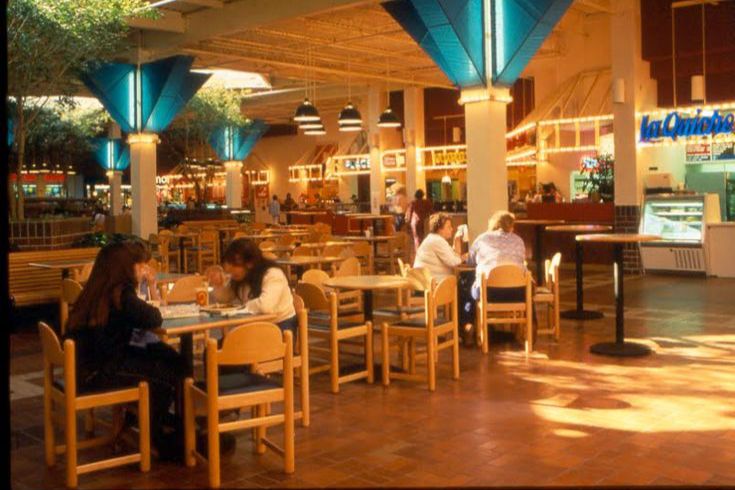
The moment you stepped into the food court, a complex, irresistible aroma washed over you. This wasn’t just the smell of food; it was a signature fragrance of the American mall. The most prominent players in this sensory symphony were often the salty-sweet crust of Sbarro pizza, a dominant force in mall dining, and the gooey, sugary, cinnamon cloud emanating from Cinnabon, which expanded rapidly throughout the ’80s and ’90s. This mix was frequently punctuated by the creamy, citrus scent of an Orange Julius, a popular frozen drink that had been a mall staple since the 1950s. Kids and teens knew they could count on this olfactory experience, which promised a high-calorie, low-cost break from shopping, often involving greasy fries, a slice of pizza, or a sugar-laden treat that served as the perfect fuel for an afternoon of endless wandering.
2. Hanging Out at the Arcade
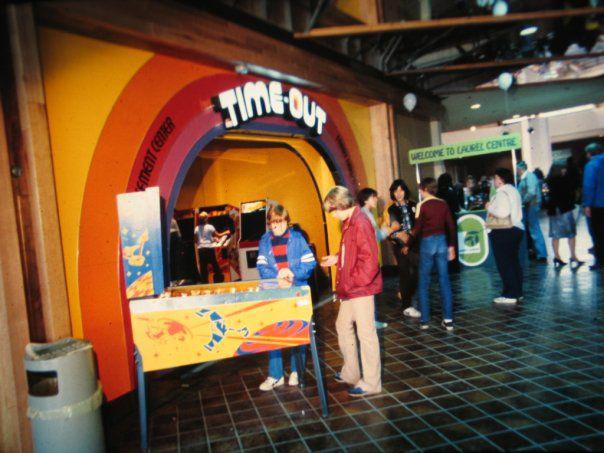
Before home consoles like the PlayStation and Nintendo 64 truly dominated, the mall arcade, often a dedicated store like Tilt or Time-Out, was the ultimate destination for digital entertainment. The air was thick with the rhythmic, electronic cacophony of Pac-Man, the intense button-mashing sounds of competitive fighting games like Street Fighter II (released in 1991), and the thunderous flipper noise of pinball machines. Kids would strategically pool their quarters, eager to prove their skills and ascend the high-score board. It wasn’t just about the games; the arcade was a highly social environment where crowds would gather around the hottest cabinets, mesmerized by the skilled maneuvers of the local champs, making it a crucial stop for both entertainment and social hierarchy in the teen mall ecosystem.
3. Pretzels Bigger Than Your Head
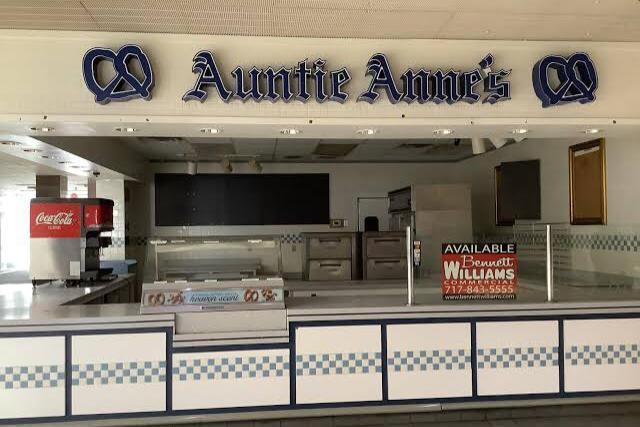
The scent of warm, salty butter was an unmistakable sign that you were near an Auntie Anne’s or Wetzel’s Pretzels stand. The massive, hand-rolled soft pretzels, often served piping hot with a cup of cheese or a cinnamon-sugar coating, became an iconic mall snack during this era. Auntie Anne’s, founded in 1988, rapidly became a ubiquitous sight in malls across the US, offering a savory alternative to the food court’s more substantial meals. For kids, walking the mall halls while gnawing on one of these enormous, twisted treats, which sometimes seemed larger than their actual heads, was a badge of honor. It was a simple, yet deeply satisfying indulgence that elevated the simple act of a mall walk into a memorable, and deliciously messy, experience.
4. Music Stores with Headphones
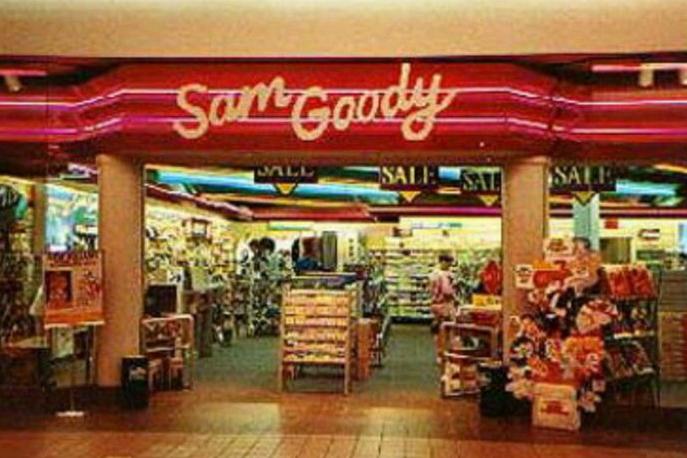
Music exploration in the ’80s and ’90s often centered on mall stores like Sam Goody, Tower Records, or FYE (For Your Entertainment). These stores were treasure troves of CDs, cassettes, and, earlier in the era, vinyl. The ultimate perk for a browsing kid, however, was the listening station. These featured clunky, over-the-ear headphones tethered to a display of new releases. You could slip them on and preview snippets of albums, from grunge and hip-hop to pop and new wave, before committing your precious allowance to a purchase. This act was a pre-digital form of music discovery, allowing children and teens a moment of personal, immersive connection with music, transforming a simple retail experience into a crucial step in developing their personal musical tastes and cultural identity.
5. Fountain Coins for Good Luck
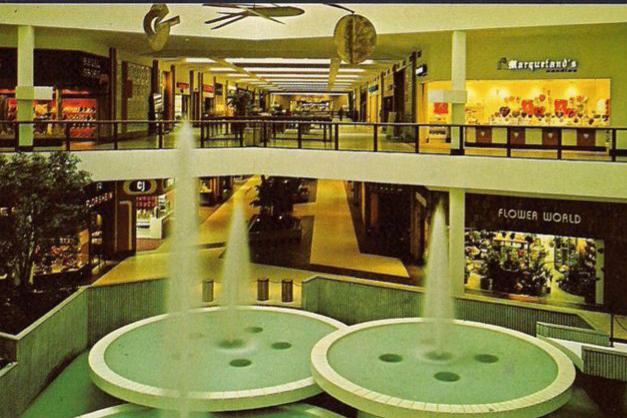
Nearly every multi-level mall featured a sprawling, ornamental water fountain, often situated in a central atrium or beneath a large skylight. For kids, these fountains weren’t just decorative; they were magnets for magical thinking. The shimmering water was littered with pennies, nickels, and dimes, evidence of countless wishes already made. Children would persistently plead with parents for spare change, a nickel or a dime was considered a jackpot, to toss into the water. The practice of making a wish and casting a coin became a miniature ritual, connecting the child to the collective dreams and aspirations of every other kid who had visited that spot. Over the years, the cumulative value of these seemingly trivial coins would often amount to significant, silent fortunes collected by mall management.
6. Department Store Escalators
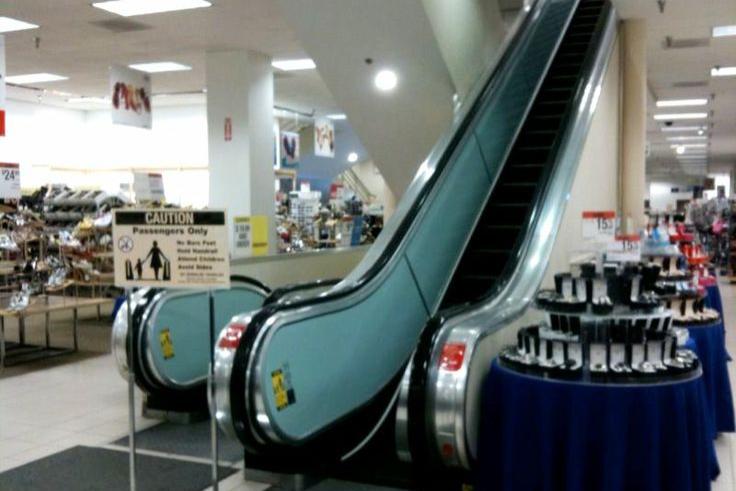
The massive anchor department stores like Sears, JCPenney, or Macy’s were more than just shops; they were vertical playgrounds, all thanks to the escalators. For children, a simple escalator ride was an automatic thrill. The feeling of stepping onto the moving metal stairs, the slight apprehension as the ground suddenly moved, and the view over the railing from the higher floors made it an adventure. Sometimes, kids would try to walk backward against the movement for a brief, forbidden rush, or simply ride them up and down in a continuous loop, delighting in the mechanical novelty. This simple, repetitive action was a subtle rebellion against the boredom of parental shopping, transforming a mundane trip between floors into a secret, physics-defying escapade.
7. Glamour Shots Studios
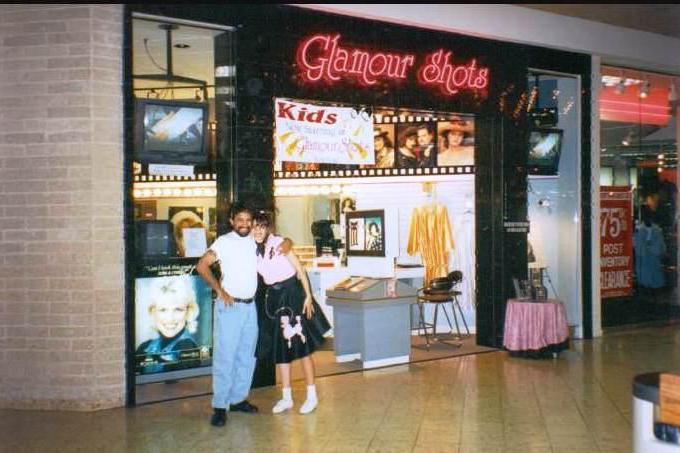
Nothing screams ’90s mall culture quite like the Glamour Shots studio. This photo service offered an instant, affordable taste of celebrity-style airbrushed photography, making it an incredibly popular destination for teens and young adults. The experience was transformative: clients were given access to elaborate makeup, dramatically teased hair, and a wardrobe of satin jackets, feathery boas, or glittery scarves. The final, soft-focus portraits, often featuring dramatic poses and lighting, were presented as cinematic, aspirational images. For many, these heavily stylized prints, taped to lockers or bedroom mirrors, offered a fun, if sometimes embarrassing in retrospect, memory of their youth, capturing the over-the-top aesthetic trends of the decade.
8. Smelling Every Candle in the Store
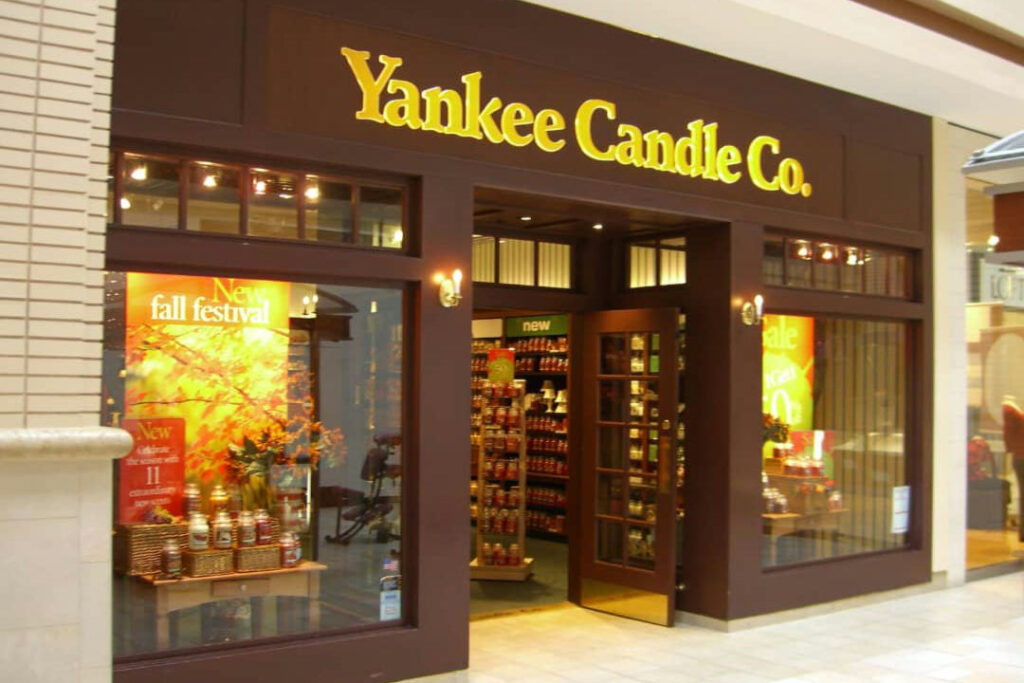
The ’80s and ’90s saw the rise of specialty scent retailers like The Body Shop and Yankee Candle, which turned the simple act of shopping into a highly olfactory experience. For a kid, tagging along with a parent into one of these aromatic havens was an intensive, sensory assault. Children were often left to entertain themselves by sampling every product on the shelf. This meant lifting the lid off countless candle jars, inhaling potent fragrances ranging from heavy vanilla and spiced cinnamon to the decade’s popular, synthetic “ocean breeze” or “sun-kissed cotton.” By the time they left, their nostrils were entirely overwhelmed and slightly numb, a memorable side effect of navigating the intense, manufactured scent landscape of mall retail.
9. KB Toys and Endless Action Figures
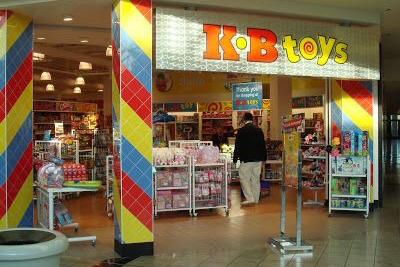
KB Toys, identifiable by its bright red and yellow signage, was a cornerstone of nearly every major mall. Unlike the sprawling toy sections in department stores, KB Toys felt like a hyper-concentrated wonderland, with aisles stacked from floor to ceiling, maximizing the illusion of endless supply. It was the ultimate destination for kids seeking the latest action figures from franchises like Teenage Mutant Ninja Turtles or Power Rangers, Hot Wheels die-cast cars, and countless Barbie accessories. The limited floor space often meant that desirable items were stocked high or crammed together, adding to the store’s frenetic energy. The store’s existence was a persistent magnet for nagging, as kids invariably begged their parents to leave with a tiny, often plastic, treasure purchased from the cash wrap near the exit.
10. Photo Booth Strips with Friends
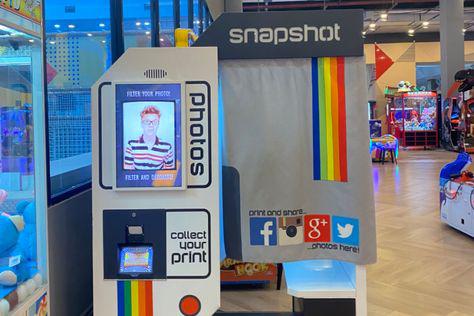
The trusty, clunky photo booth was an essential piece of mall technology and a definitive social ritual for ’80s and ’90s kids. Usually tucked away in a corner near the arcade or a major entrance, it was where friends would squeeze themselves together, trying to maximize the number of faces in the frame. The anticipation as the machine whirred, clicked, and developed the images was palpable. Moments later, it would dispense a strip of four grainy, black-and-white or color pictures, often featuring intentionally goofy faces, crossed eyes, or rapid-fire prop changes. These strips were instantly valuable currency, proof of an afternoon well-spent, ready to be taped inside a locker, pinned to a bulletin board, or lovingly traded and shared among the group.
11. Clothing Store Soundtracks
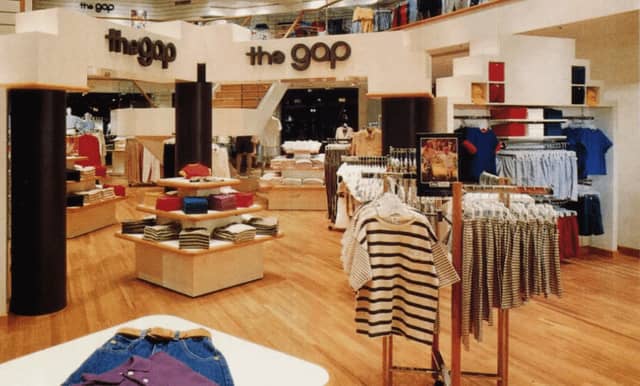
Walking past popular ’90s apparel stores like The Gap, Abercrombie & Fitch, or Express wasn’t a quiet experience; it was an aural blast designed to draw in the target demographic. These stores famously pumped loud, curated playlists of the latest pop, alternative, and hip-hop hits directly into the mall concourse. The high volume was a deliberate marketing strategy, establishing the brand’s identity and energy. For a kid roaming the mall, this often meant a constant, free soundtrack to their afternoon, with the latest tracks from artists like Nirvana, Britney Spears, or TLC providing a rhythm to their browsing. This was a key pre-digital way to consume current music and helped to set the atmosphere long before personalized streaming services became the norm.
12. Window Shopping Sneakers
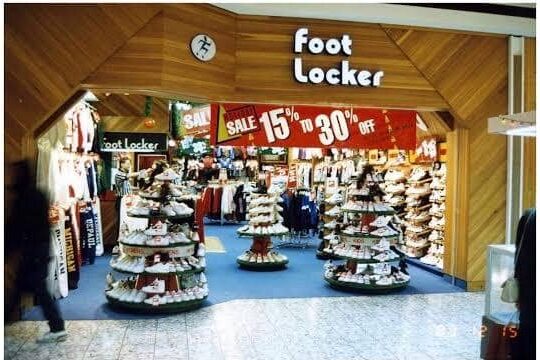
For a generation obsessed with basketball and street culture, stores like Foot Locker, Finish Line, and Champs Sports were sites of pilgrimage. Their walls were lined with rows of gleaming, expensive sneakers, including iconic, highly-coveted releases like Nike Air Jordans and the latest Reebok Pumps. For kids, many of whom were shopping with meager allowances, these walls of shoes were less about buying and more about reverence. They would press their faces against the glass or stand at the back of the store, staring at the brightly lit displays, treating the sneakers less as footwear and more as expensive, desirable works of athletic art. The experience was a blend of aspiration and consumer education, teaching kids about brand power and the cultural significance of high-end athletic gear.
13. The Smell of New Leather in Wilsons
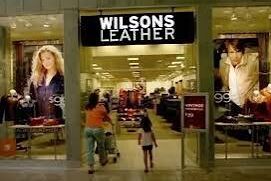
Virtually every mall featured a Wilsons Leather store, and its presence was announced long before you reached the doorway. The powerful, distinct scent of new, treated leather was so strong that it often permeated the air several storefronts away, adding a rich, earthy note to the general mall aroma. While the store was primarily aimed at adults buying jackets, briefcases, and luggage, kids often wandered in, drawn by the unique, heavy scent and the dimly lit, sophisticated atmosphere. For many, the store wasn’t a place to make a purchase, but simply another stop on the sensory tour of the mall, where the intense smell became a core part of the overall, unforgettable “mall smell” memory from their youth.
14. Disney Store Magic
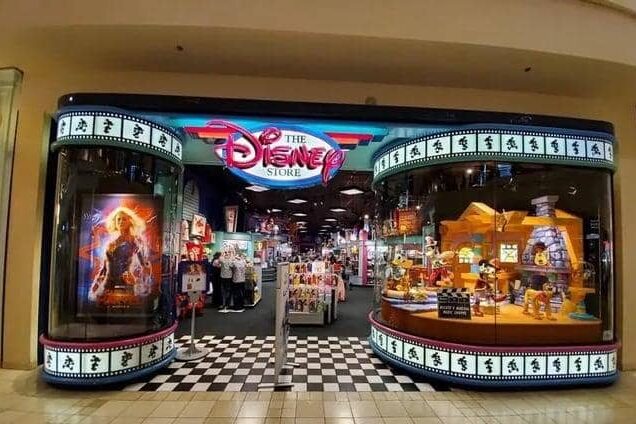
The moment a child stepped into The Disney Store, they were instantly transported out of the suburban mall and into a fantastical, animated world. These stores were designed as immersive experiences, featuring bright, inviting colors, massive displays of soft-stacked plush toys, and, crucially, large screens playing continuous loops of classic and contemporary Disney movie clips and animated trailers. The atmosphere was always vibrant and energetic, effectively merging retail with entertainment. It allowed children to feel momentarily integrated into the worlds of The Lion King or Aladdin, making it a powerful magnet for both merchandise and pure imaginative play, often leaving kids with a palpable, if unattainable, desire for everything on the shelves.
15. Getting Lost in Spencer’s
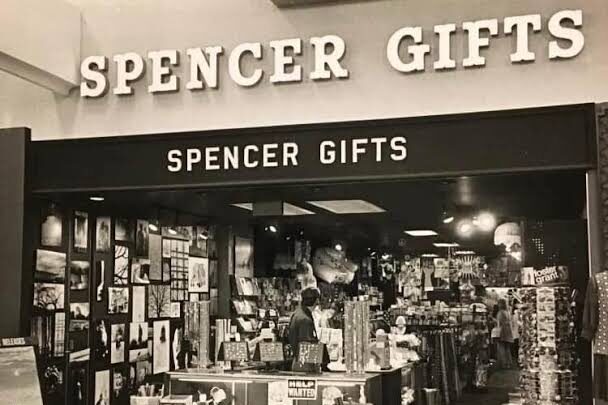
Spencer’s Gifts was the “cool” and slightly forbidden store that every kid was drawn to, often because their parents quickly ushered them past the entrance. The store specialized in a unique, eclectic mix of merchandise: glow-in-the-dark posters, lava lamps, novelty gag gifts, edgy T-shirts, and slightly risque, humorous items. The perpetually dim lighting and crowded aisles gave it a rebellious, mysterious feel. For pre-teens and teens, entering Spencer’s was a rite of passage, a chance to explore a space that felt a little adult, a little creepy, and completely hilarious. It was a cultural touchstone that provided a safe space for kids to flirt with counter-culture and adolescent humor, making it an essential, unforgettable stop for sheer browsing and curiosity.
16. Browsing Bookstores Without Buying Anything
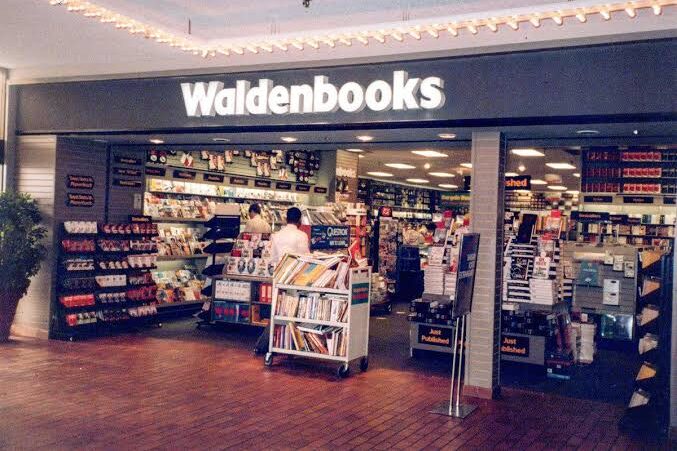
In the age before e-readers and major online bookstores, Waldenbooks or B. Dalton served as quiet, air-conditioned sanctuaries within the bustling, noisy mall. These stores were common destinations for parents, who would sometimes drop off their children as a form of “supervised independence” while they completed other errands. Kids would head straight for the back aisles, settling down on the carpet or a quiet step to devour comic books, flip through the latest issues of magazines, or get lost in popular series like Goosebumps or The Babysitters Club. The low-pressure environment often meant hours could be spent browsing the shelves, reading snippets, and getting lost in fiction, only to be dragged away by a parent, often without a single book purchase.
17. The Mall Santa Experience
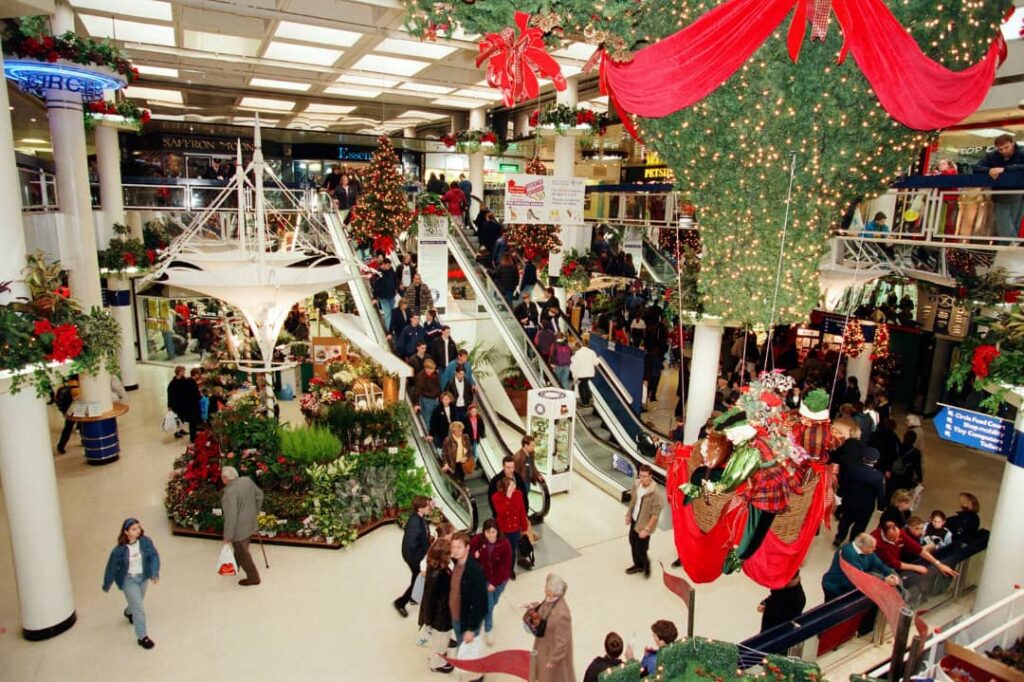
During the holiday season, the central court of the mall would undergo a magical, dramatic transformation into a Winter Wonderland. The centerpiece was the imposing, ornate Mall Santa set, often complete with fake snow, enormous candy canes, and velvet ropes. Lining up to sit on Santa’s lap was a yearly holiday tradition: a moment of high-stakes pressure where kids had to quickly rattle off their wish list while being blinded by the camera flash. The reward was a treasured, often blurry, Polaroid photograph that served as a tangible memory. This experience was a blend of genuine childlike wonder and social performance, making the Mall Santa a powerful, if slightly intimidating, icon of ’80s and ’90s holiday nostalgia.
18. Sticker Machines and Gumballs
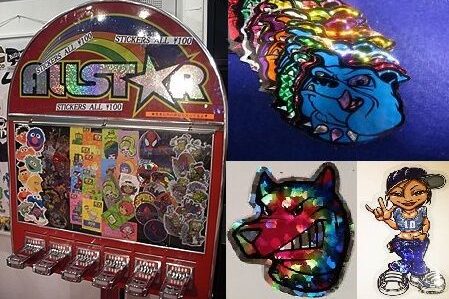
A simple quarter was the key to unlocking a small moment of pure retail joy at the ubiquitous sticker and gumball machines. These brightly colored, often sticky contraptions were scattered near every entrance and food court. For just 25 cents, a kid could turn the crank and wait for the satisfying clunk of a large, neon-colored gumball or a small, clear capsule containing a sparkly sticker or a temporary tattoo. The contents were often low-quality but irrelevant, the thrill was in the physical, mechanical process of turning the lever and the surprise of the prize. These simple, low-cost vending machines were a constant source of low-stakes excitement, providing an instant reward that was perfectly tailored to a child’s short attention span.
19. The Mall as a Social Hub
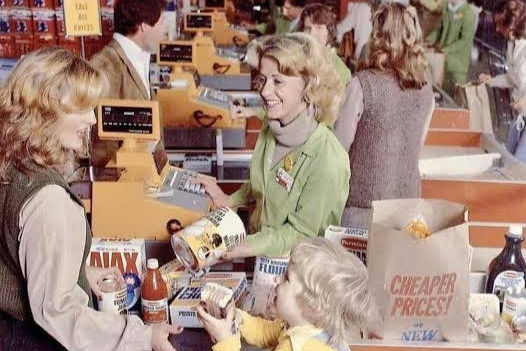
Above all else, the mall was the undisputed social center of suburban youth life. It wasn’t about the shopping; it was about the seeing and being seen. For teens, it was the perfect, semi-chaperoned neutral territory for meeting friends, scoping out crushes, and simply walking the endless halls in a self-conscious parade. For younger kids, it represented an early taste of independence, a place where they could navigate the crowds without a parent holding their hand. The act of roaming the concourse, stopping to talk at the fountain, or hanging near the arcade was a crucial part of the coming-of-age experience, making the mall less a retail center and more a crucial stage for social and personal development.
20. That Final Stop at Orange Julius
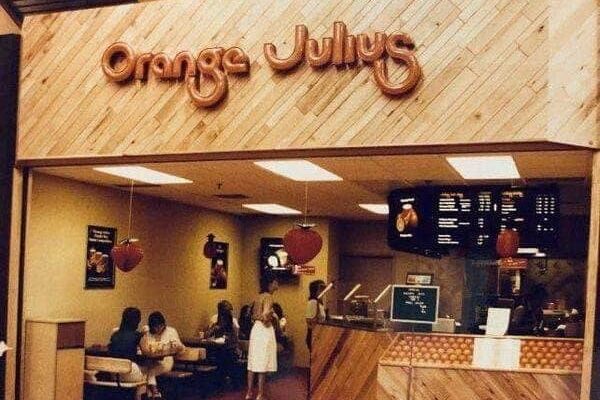
The final, essential stop before leaving the mall was almost always for a final sugar rush, most often in the form of a frothy, neon-colored beverage. The Orange Julius, a sweet, frothy blend of orange juice, milk, egg whites, and sweetener, was the iconic mall drink of the era, known for its distinctly creamy texture. Alternatively, the brightly colored, brain-freeze-inducing ICEE drinks, available in a variety of powerful flavors, served a similar purpose. This final, cold, sweet blast of sugar and flavor was the perfect capstone to a long afternoon. It was the treat that gave kids a final boost of energy, carrying their happy, exhausted bodies, filled with memories and a few small treasures, out the automatic sliding doors and back to reality.
That bright neon glow of the arcade, the powerful scent of a new pretzel, and the general hum of a thousand social interactions, the mall wasn’t just a place, it was an entire Saturday afternoon perfectly encapsulated.
What’s the one memory that instantly transports you back to those bustling, beautiful halls?
This story 20 Things Every Kid Remembered About Going to the Mall in the ’80s and ’90s was first published on Daily FETCH


